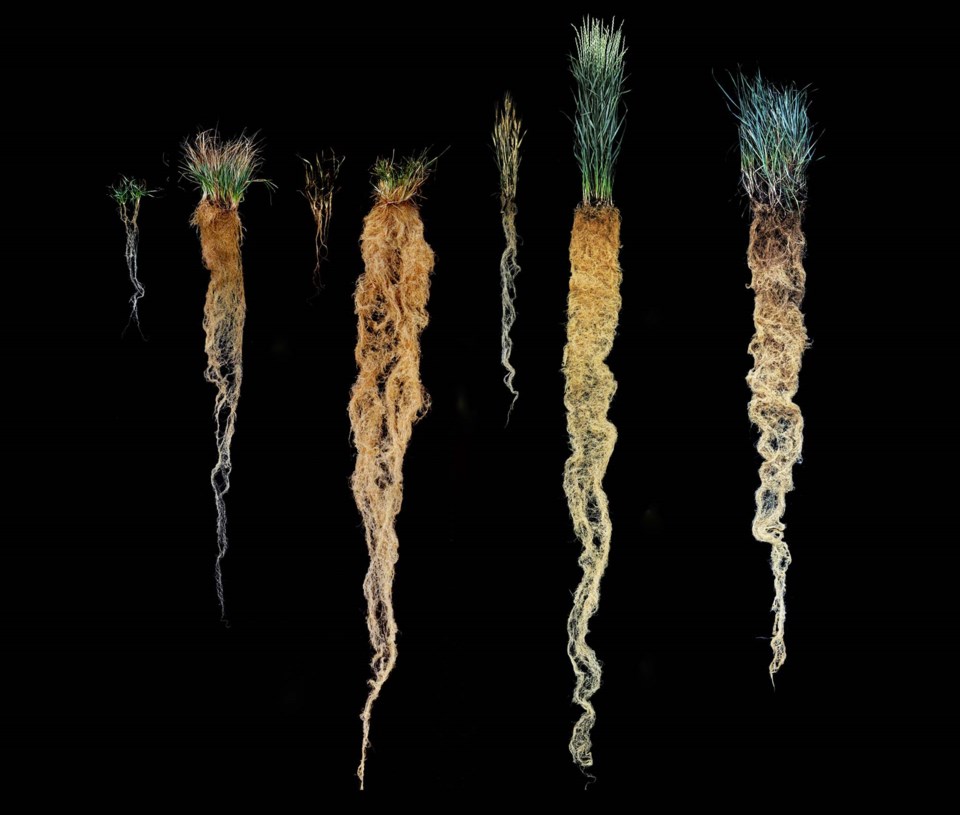Alberta farmers could turn their crops into carbon sinks if they plant perennial grains, a new University of Alberta study suggests.
U of A renewable resources Prof. Guillermo Hernandez-Ramirez and his team published a study earlier this spring on how perennial rye stores much more carbon in the ground than seasonal rye.
Agriculture is the fifth biggest source of greenhouse-gas emissions in Canada, accounting for about 10 per cent of this country’s carbon footprint. Researchers are now seeking ways to turn farms, particularly farm soils, into carbon sinks and fend off global heating.
Most Alberta crops are annual ones which must be replanted each year, Hernandez-Ramirez said. Perennial crops are planted once and grow for multiple seasons, which means less tillage, less erosion, and less work for the farmer.
Previous studies show that perennial crops could reduce nitrous oxide emissions — another potent greenhouse gas — compared to annual grains. Hernandez-Ramirez and his team set out to do what is likely the first side-by-side comparison of perennial and seasonal grains to see how they compare in terms of carbon storage and water use.
Big roots, big benefits
Hernandez-Ramirez and his team prepared two adjacent four-hectare fields at the Breton Plots back in 2017, seeding one with seasonal rye and the other with perennial rye. They then used soil samples, weather stations, and infrared sensors to track water use and soil carbon storage in the fields in 2018 and 2019.
The team found that the perennial rye stored way more carbon in the soil than the annual one: about 556 grams per square metre a year compared to 89 (i.e. basically nothing). The perennials also did not use more water than the annuals.
“These perennial grains were able to sequester a large amount of CO2,” Hernandez-Ramirez said, with the four-hectare plot absorbing the carbon equivalent of burning 35,000 litres of gasoline a year.
Perennials can store so much carbon because of their extensive root system, said Samantha Curtis, a plant science master’s student at the University of Manitoba who studies perennials and was not involved with this study. The roots of seasonal spring wheat go down up to a metre, for example, while those of the perennial wheatgrass Kernza go down more than three metres.
“It’s able to get much deeper into the soil and able to add a lot more carbon to the soil,” she said, especially since those roots are too deep to be churned up by tillage.
Hernandez-Ramirez said perennials grow for more of the year compared to seasonal crops as they don’t have to be replanted, which gives them more time to suck carbon out of the air. You also don’t have to replant them as often, which means less soil disturbance and less soil carbon loss to the air.
Perennial grains have yet to catch on with farmers since they generally aren’t as productive as annual grains, Curtis said. Still, new varieties are in development, and she suspects the lower fuel and fertilizer requirements of perennials could make them more attractive.
Hernandez-Ramirez said researchers still have a lot of questions to answer about perennial grains, including weed management, which varieties work best in Alberta, and how they would fit into a crop rotation. Unlike annual grains, which have had centuries of crop development, “With perennial grains, we are just starting to do our homework.”
Hernandez-Ramirez said perennials and annuals will likely both have a place on future farms, as annuals are more responsive to market forces.
He and his team are now doing a study to see how perennial wheat perform in various parts of Alberta.
The study can be found in the March 1, 2022, issue of Agricultural and Forest Meteorology.



